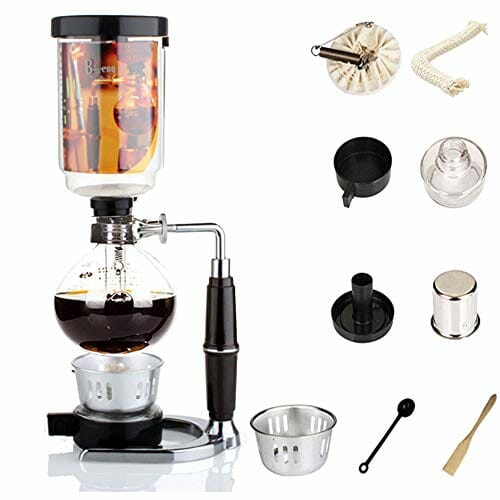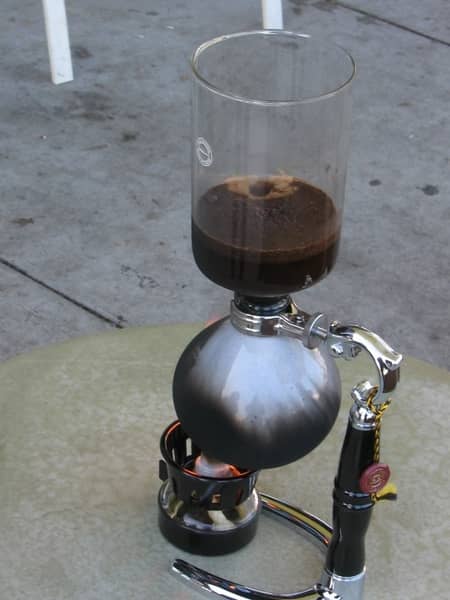If you love coffee, then you know that there are few things better in this world than a fresh cup of siphon coffee.
But unless you’re a pro, making siphon coffee can be a little tricky. That’s why we’ve put together this cheat sheet to help you make the perfect cup every time.
In this article, we’ll demonstrate how to use a siphon coffee maker the best and proper way, from assembling the machine to brewing the perfect cup of coffee.
So whether you’re a beginner or an expert, read on for tips and tricks for making the perfect siphon coffee.
If you’re not yet aware, siphon coffee makers are devices that brew coffee by the full immersion brew method.
It has 2 chambers:
- The bottom brewing chamber holds brewing water.
- The upper chamber contains the coffee grounds.
What Is A Siphon Coffee Maker?
The water in the bottom siphon chamber is heated up via a heat source underneath, which generates vapor pressure to push the boiling water into the upper chamber to brew coffee.
The result is a delicious cup of clean coffee with a rich, smooth flavor.
It has a very interesting appearance that’s almost steampunk-inspired, making it a great conversation piece for your kitchen.
There are many different types of siphon coffee makers on the market, from electric models to manual stovetop ones.
The immersion brewer can also be referred to as a “vacuum coffee maker” or “vacuum pot” because of the way it creates a vacuum to brew the coffee.
How Do Siphon Coffee Makers Work?
Here is a more detailed description of the construct of the vac pot:
- The lower chamber is filled with the brewing water and where the finished product would eventually sit.
- The top chamber has an open-ended siphon tube attached to it.
- This is where coffee grounds would be added and the siphon coffee brewing process takes place.
- A good seal (gasket seal) is placed between 2 chambers to create a partial vacuum during the process.
- A filter is placed at the bottom of the top vessel.
As mentioned above, basically, this is how a siphon coffee maker works:
- The lower chamber is filled with water and heated to create steam.
- The steam pressure forces the water to rise into the upper chamber where it mixes with the coffee grounds that you add.
- Occasionally, stir the mixture to fully saturate the grounds.
- When it’s finished, remove it from the heat source.
- The coffee is siphoned back down into the lower chamber through the filter, ready to be served.
What Is The Advantage Of Coffee Siphon?
Clean And Smooth Brew
The siphon coffee brewing process is simple yet creates a clean cup with a complex flavor profile that’s free of bitterness.
This is due to the fact that the grounds are never exposed to high temperatures for an extended period of time, which can lead to burning and bitterness.
Constant Heat Source
Another advantage is that you have easier water temperature management because the heat source (usually a butane burner) is constant.
This allows for consistent brewing and prevents the burning of the grounds.
More Control And Richer Brew
The full-immersion process can last as long as you keep the flame going, so you have more control over the brew time, unlike the Pour-Over process which ceases when you run out of water.
The result is a fuller and richer extraction.
Eco-Friendliness
The siphon coffee brewer can utilize reusable filters like cloth filters that produce no waste, making it much more sustainable and eco-friendly than many other brewing methods.
Aesthetically Pleasing Visuals
The device also looks incredibly cool (like lab equipment) and will definitely impress your friends (or anyone who sees it).
How Do You Make A Good Siphon Coffee?
Now that you know how a siphon brewing maker works, it’s time to learn how to make a good cup of coffee with one.
What Is The Ideal Grind Use For Coffee Siphon?
Though the grind size is subjected to change depending on the type of coffee filter you use and your preferred coffee strength, use medium or medium-fine-sized ground coffee for siphon brewing at the beginning. This is the same grind size as a drip coffee brewer.
From there, you can go coarser or finer depending on your personal needs.
And, as you would with other coffee brewing gear, please grind your coffee beans right before brewing coffee.
Freshly ground coffee has a bigger impact on the quality of the finished coffee cup than you might think.
If you’re concerned about the roast profile, you can pretty much use whichever you prefer, be it light, medium, or dark roast coffee.
But I think lighter roasts have a much better chance to shine with this brewing method. Don’t know where to start? Pick the crowd-pleaser medium roast!
How Much Coffee Is In A Siphon?
The recommended coffee-to-water ratio for a siphon brewer is between 1:15.
This is a bit more coffee than you would use for other brewing methods, but it’s necessary to achieve the rich, smooth flavor that siphon specialty coffee is known for.
If you find that you brew coffee too strong, you can always add more water or use fewer grounds. On the other hand, if you want a stronger cup of coffee, simply use less water or more grounds. It’s that easy!
And make sure that you use filtered water. Poor quality water with sediments or a weird taste or odor can affect the taste of the final brew as well.
The brewing temperature should be maintained between 195 to 205 degrees Fahrenheit (91 – 96 degrees Celsius) throughout the process.
What Type Of Coffee Filter Do I Need For A Siphon Coffee Maker?
There are a few different types of coffee filters you can use with a siphon brewer.
The most common type is the cloth filter, which is available in both reusable and disposable varieties.
If you want a more environmentally-friendly option, go with the reusable cloth filter.
Cloth filters allow more favorable coffee compounds to pass through.
You can also use a metal filter, which is available in both permanent and disposable varieties.
Permanent metal filters are less common, but they’re the more economical choice in the long run.
They’re also easier to clean and maintain than cloth ones.
Disposable paper filters can also be used, but they’re not as common because they can affect the flavor of the coffee.
![How to Use a Siphon Coffee Maker Properly [9 Simple Steps] 5 Disposable paper filters can also be used, but they're not as common because they can affect the flavor of the coffee.](https://coffeegeek.tv/wp-content/uploads/2022/04/Disposable-paper-filters-can-also-be-used-but-theyre-not-as-common-because-they-can-affect-the-flavor-of-the-coffee..jpg)
The bottom line is, the type of filter you use is entirely up to you.
- If you want the easiest option, go with a disposable paper filter.
- If you’re looking for the best flavor, go with a reusable cloth or metal filter.
What Alcohol Do You Use In Siphon Coffee?
Some siphon brewers come with an alcohol burner so you don’t have to search for another heat source when brewing coffee.
For the best result, use soot-free denatured alcohol.
You can also consider getting a butane burner which offers a more consistent and controllable flame with faster results.
Isopropyl alcohol or rubbing alcohol may work in a pinch but it tends to burn a lot hotter and create a lot of soot, which doesn’t look the most appealing.
We recommend using a butane burner with your siphon coffee maker where possible.
How To Use A Siphon Coffee Maker
Step 1: Prepare Ground Coffee
- Grind the beans.
- Prepare enough grounds and water to meet the ratio you have in mind. You can use a coffee scale to get the job done.
- You can use pre-heated water (not boiling) to speed up the process. It’s recommended but optional.
Step 2: Set Up The Top Chamber
- Carefully drop the filter into the upper chamber so that the filter’s chain slips through the siphon tube. You may need to turn it clockwise to secure it.
- Pull the chain down and attach the clip to the bottom of the tube.
- Place the top vessel on the side upside down so that it doesn’t roll anywhere.
Step 3: Set Up The Burner
- If you’re using a traditional brewer that’s non-electric, use a lighter to create an open flame.
- Make sure you’re prepared to distinguish the fire in case it goes out of hand. For example, have a fire distinguisher or a water source nearby.
- If you’re using an electric brewer, just turn on the burner via a button or something similar according to the manual.
Step 4: Add And Heat Up Water
- Pour the water you’ve prepared into the bottom chamber.
- Place the heat source underneath the lower bowl.
- Wait until it reaches the near-boiling brewing temperature (between 195 to 205 degrees Fahrenheit/91 – 96 degrees Celsius). You can use a thermometer to get it right.
Step 5: Seal The Chambers Together
- Slowly lower the top chamber to fit the tube inside the bottom chamber.
- You can observe most of the water kicks up into the top vessel.
Step 6: Add Grounds
- Pour the grounds you’ve prepared into the top chamber.
- Use a wooden spoon, bamboo paddle, or any stirring stick to quickly stir the grounds and mix them with the hot water.
- You can move it in the shape of the letter “N” or just a circular motion.
Step 7: Brewing Coffee
- Wait for around 2 – 4 minutes.
- Occasionally stir the mix with the wooden spoon.
Step 8: Let It Go
- Remove it from the heat by turning off the burner when it finishes steeping.
- Allow the brewed coffee to siphon back down (draw down) into the bottom chamber while the used grounds should remain in the top vessel.
What Is The Ideal Brewing Time Of Coffee Siphon?
Ground coffee preparation aside (try to grind your coffee yourself!), you can expect the coffee brewing process with siphon brewers to take around 4 minutes.
This is pretty much the standard brew time for most brewing methods to extract all of the rich flavors and oils from the coffee beans.
If you find that your coffee is too weak, simply brew it for a longer period of time.
On the other hand, if your coffee is too strong, try brewing it for a shorter amount of time.
Find the balance in the brewing time depending on the flavor until you’ve dialed it in to your liking.
You can also play around with the coffee grind size and coffee-to-water ratio for a better result.
However, keep in mind that it can take quite some time to set up the device, especially if you’re not used to handling it.
What Is Japanese Siphon Coffee?
![How to Use a Siphon Coffee Maker Properly [9 Simple Steps] 7 What Is Japanese Siphon Coffee?](https://coffeegeek.tv/wp-content/uploads/2022/04/What-Is-Japanese-Siphon-Coffee.jpg)
It’s made from the same device but some tweaks are made to the process. And, like many other crafts, the Japanese have turned this brewing method into a form of fine art.
How Do You Use A Japanese Coffee Siphon?
Both the American and Japanese ways share fundamental similarities comprising:
- The full immersion of the grinds in hot water
- The vacuum effect due to the brewer’s construct and vapor pressure
- The constant heat source applied
But there are quite significant differences between the American and the Japanese method:
- The Japanese add grounds to the top vessel from the start, after they’ve preheated it.
- Instead of securing the upper vessel in place right from the start, the Japanese place it at a tilted angle. And they do it before the water has reached the right temperature.
- Instead of using a thermometer, the Japanese gauge the water temperature by observing the filter’s chain.
- If there are tiny bubbles forming around the chain, the temperature is just right (near-boiling).
- If no bubbles have formed, wait for a little while longer as the water is still too cool.
- If large bubbles rapidly form, however, the water has become too hot. You need to remove the vessel from heat.
- At the proper temperature, the top vessel is readjusted to become securely attached to the bottom one.
- How they let it brew is different as well:
- Once only around 1 – 2 inches of water has entered the upper chamber, enough to immerse the grounds bed, they’ll use a stirring stick to gently stir the mixture in a circular motion.
- They then let it steep for around 25 – 30 seconds before giving a couple of quick swirls.
- They then turn the burner to a smaller heat and move the device off to the side of the burner so that only a little bit of heat reaches the bottom chamber as the brew kicks down.
- The Japanese brew method makes a cup much faster than the American way, only taking around 2 minutes 30 seconds.
How Do You Serve Siphon Coffee?
![How to Use a Siphon Coffee Maker Properly [9 Simple Steps] 8 How Do You Serve Siphon Coffee?](https://coffeegeek.tv/wp-content/uploads/2022/04/How-Do-You-Serve-Siphon-Coffee.jpg)
Now that you’ve made a fine cup of Joe, let’s find out how to best enjoy it.
You can either pour the coffee into a cup from the siphon itself or pour it into a separate decanter to serve.
If you choose to drink it from the siphon itself, though, well, be careful not to scald yourself as the glass will be hot.
Siphon java is best enjoyed black, but feel free to add a bit of milk or cream if you like.
![How to Use a Siphon Coffee Maker Properly [9 Simple Steps] 9 How Do You Serve Siphon Coffee?](https://coffeegeek.tv/wp-content/uploads/2022/04/41bY5RWV1L._SL500_.jpg)
Siphon coffee is a unique and interesting way to brew your morning cup of Joe. It takes a bit longer than other brewing methods, but the results are well worth it.
Try using a different type of coffee bean, roast profile, or grind size to experiment with the flavor.
Whether you use a Japanese or American siphon brewer, you’re sure to enjoy this unique cup of Joe.
How Do You Clean A Siphon Coffee Maker?
After each use, it’s important to clean your vacuum coffee maker to maintain optimal performance.
Here’s how:
- Step 1: Let the siphon brewer cool down a little bit.
- Step 2: Lift up the top vessel and discard the used grounds by holding it upside down and gently tapping the side with your palm.
- Step 3: Remove the filter by turning the filter handle counterclockwise and lifting it out.
- Step 4: Run the filter under warm water and let it air dry or dry it with a dish towel. If you’re using a reusable cloth filter, make sure to flush it multiple times to clean it properly.
- Step 5: Cover the bottom of the tube with your palm while running warm water into the top chamber. Move it around in a circular motion to rinse off any leftover grounds.
- Step 6: Remove your palm to let the water run through.
- Step 7: Repeat steps 5 & 6 until most (if not all) of the grounds are gone. While you’re at it, give the bottom chamber a couple of rinses as well.
- Step 8: Use a soft non-abrasive angled brush (or hand wash) and warm soapy water for the final rinse.
- Step 9: Rinse them properly under tap water and let them air dry.
- Step 10: Reassemble the device and store it in a cool, dry place.
Now you’re ready to make another delicious cup of siphon coffee!
Ready to make some mind-blowing siphon coffee with my tips and tricks? I hope so! Let me know how it goes and send any questions you may have in the comments down below!
If you haven’t found your best siphon coffee maker, get one now to satisfy your inner coffee geek!
FAQs
Where Is Siphon Coffee From?
It was invented by Loeff of Berlin in the 1830s but didn’t become a commercial success until it was later designed by a French woman in the 1940s.
It has since become popular in many regions around the world, though it went out of style in America due to the rise of electric drip machines and the beautiful Pour-Over Chemex.
It’s started to gain attention from coffee geeks again since the owner of Blue Bottle Café picked up a Japanese siphon bar that cost $20,000 back in 2008!
How Strong Is Siphon Coffee?
Siphon coffee is less intense in flavor than an Americano. Siphon coffee can be brewed to any strength you like depending on your grind size, coffee-to-water ratio, brew time, and even the type of bean or roast you use.
But even if it’s full-bodied, it’s still very clean and smooth, unlike a cup of French Press which doesn’t utilize an effective filter or have 2 separate chambers for storage afterward.
Is Siphon Coffee Filtered?
Yes, siphon coffee is filtered. The grounds are separated from the brewed coffee as it drips back down into the lower chamber.
You can use cloth filters, metal filters, or regular paper filters. Depending on the method you choose, the final taste may be slightly different. The cleanup, though, is for sure miles apart.
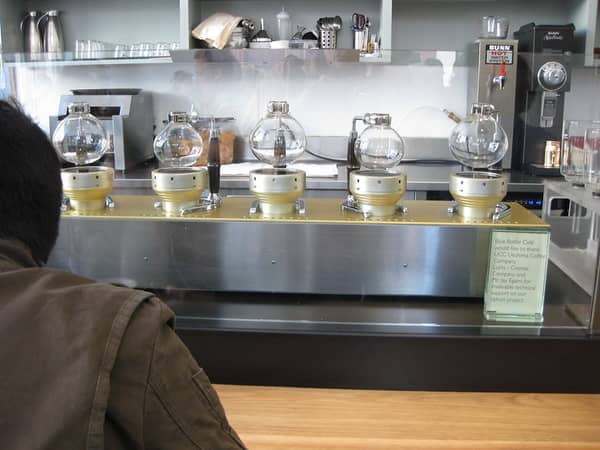
Is Siphon Coffee Less Acidic?
Yes, compared to other coffee brewing methods such as the traditional drip, siphon coffee is less acidic. It’s generally balanced in flavors.
How Do You Store A Siphon Filter?
Store the filter in a cool, dry place after air drying it until you’re ready to use it again.

![How to Use a Siphon Coffee Maker Properly [9 Simple Steps] 2 How to Use a Siphon Coffee Maker: A 9-Steps Cheat Sheet for Coffee Geeks](https://coffeegeek.tv/wp-content/uploads/2022/03/How-to-Use-a-Siphon-Coffee-Maker-A-9-Steps-Cheat-Sheet-for-Coffee-Geeks-1024x536.jpg)
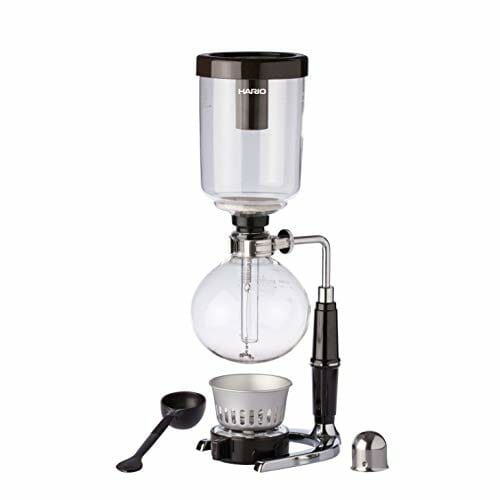
![How to Use a Siphon Coffee Maker Properly [9 Simple Steps] 3 The lower chamber is filled with the brewing water and where the finished product would eventually sit.](https://coffeegeek.tv/wp-content/uploads/2022/04/The-lower-chamber-is-filled-with-the-brewing-water-and-where-the-finished-product-would-eventually-sit..jpg)

![How to Use a Siphon Coffee Maker Properly [9 Simple Steps] 4 A good seal (gasket seal) is placed between 2 chambers to create a partial vacuum during the process.](https://coffeegeek.tv/wp-content/uploads/2022/04/A-good-seal-gasket-seal-is-placed-between-2-chambers-to-create-a-partial-vacuum-during-the-process..jpg)
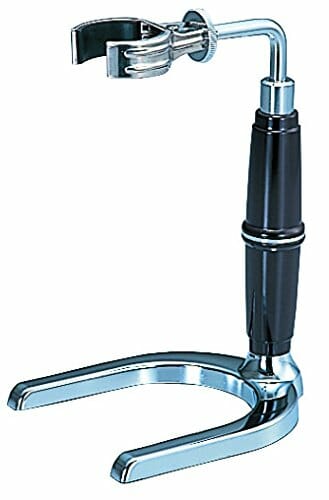


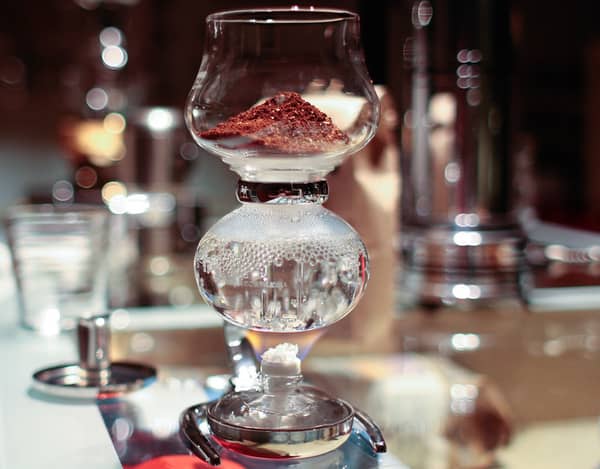

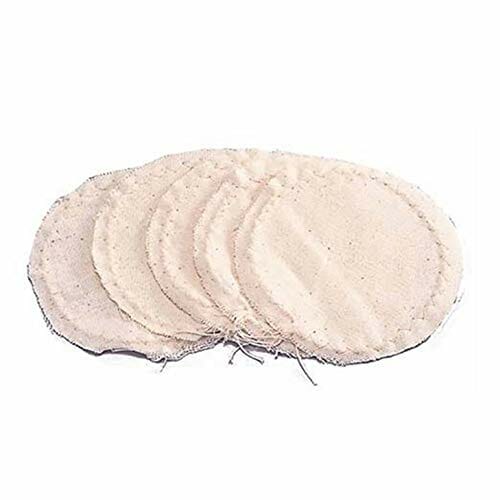

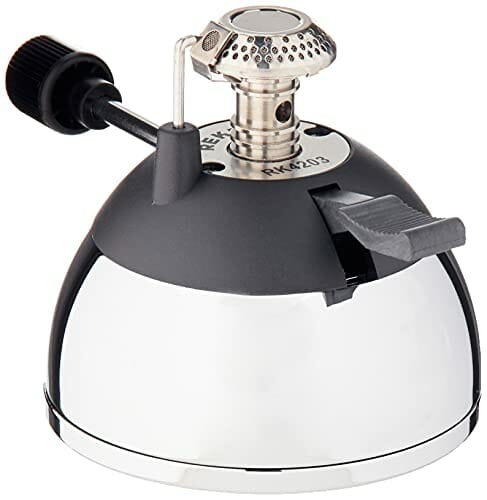

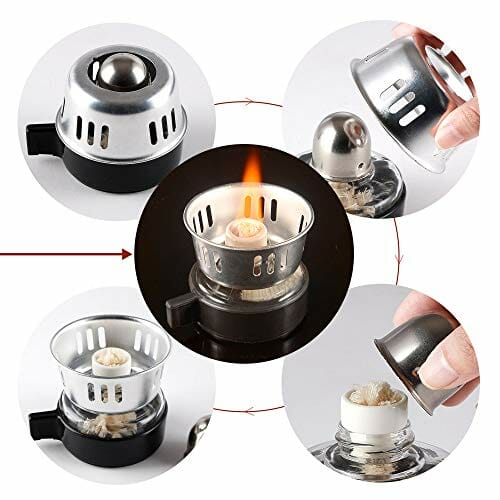

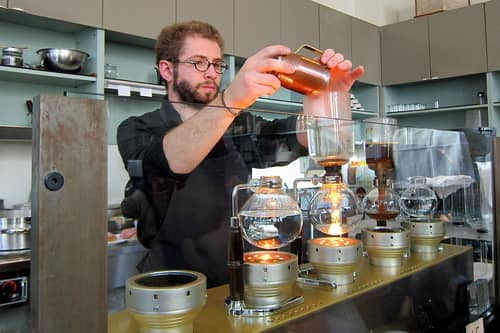

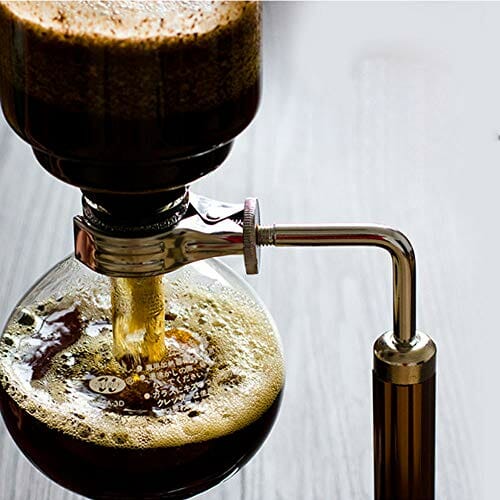
![How to Use a Siphon Coffee Maker Properly [9 Simple Steps] 6 Serve](https://coffeegeek.tv/wp-content/uploads/2022/04/Serve.jpg)
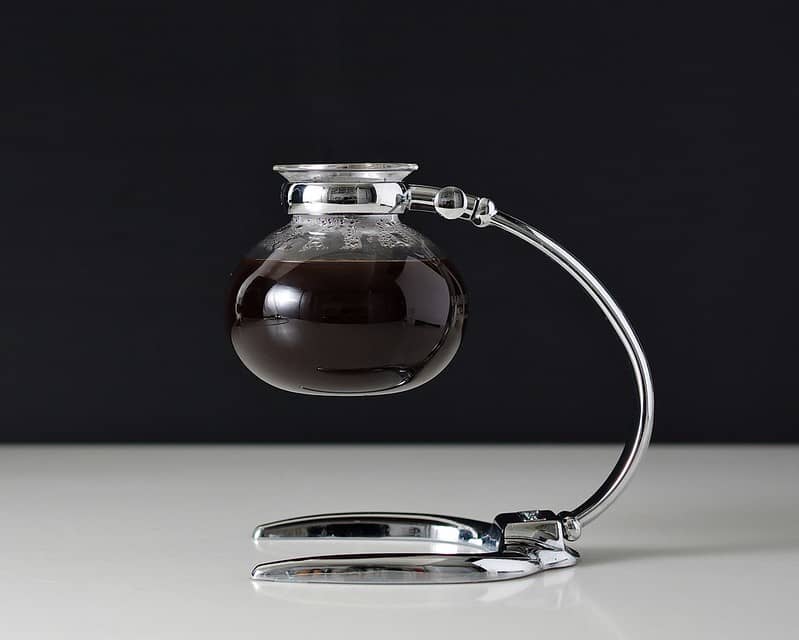
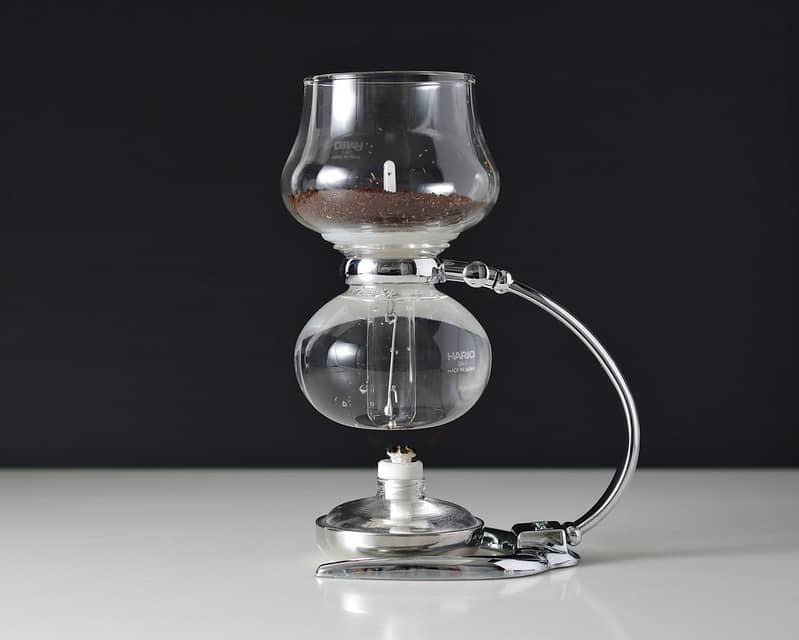

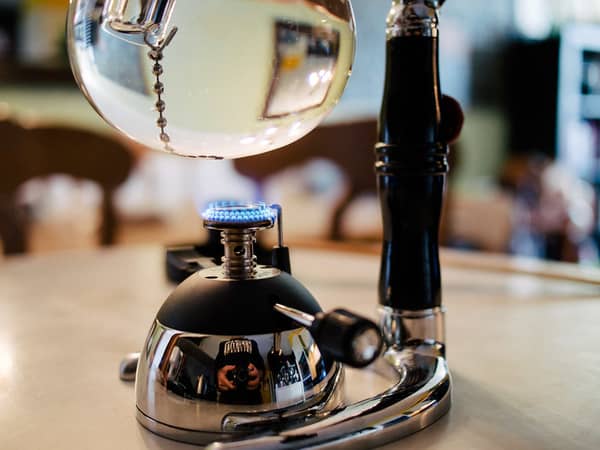
![How to Use a Siphon Coffee Maker Properly [9 Simple Steps] 10 Permanent Siphon/Syhon Coffee Filter for Hario Yama Siphon Coffee Maker and Other Syphon Coffee Maker](https://coffeegeek.tv/wp-content/uploads/2022/04/Permanent-SiphonSyhon-Coffee-Filter-for-Hario-Yama-Siphon-Coffee-Maker-and-Other-Syphon-Coffee-Maker.jpg)
